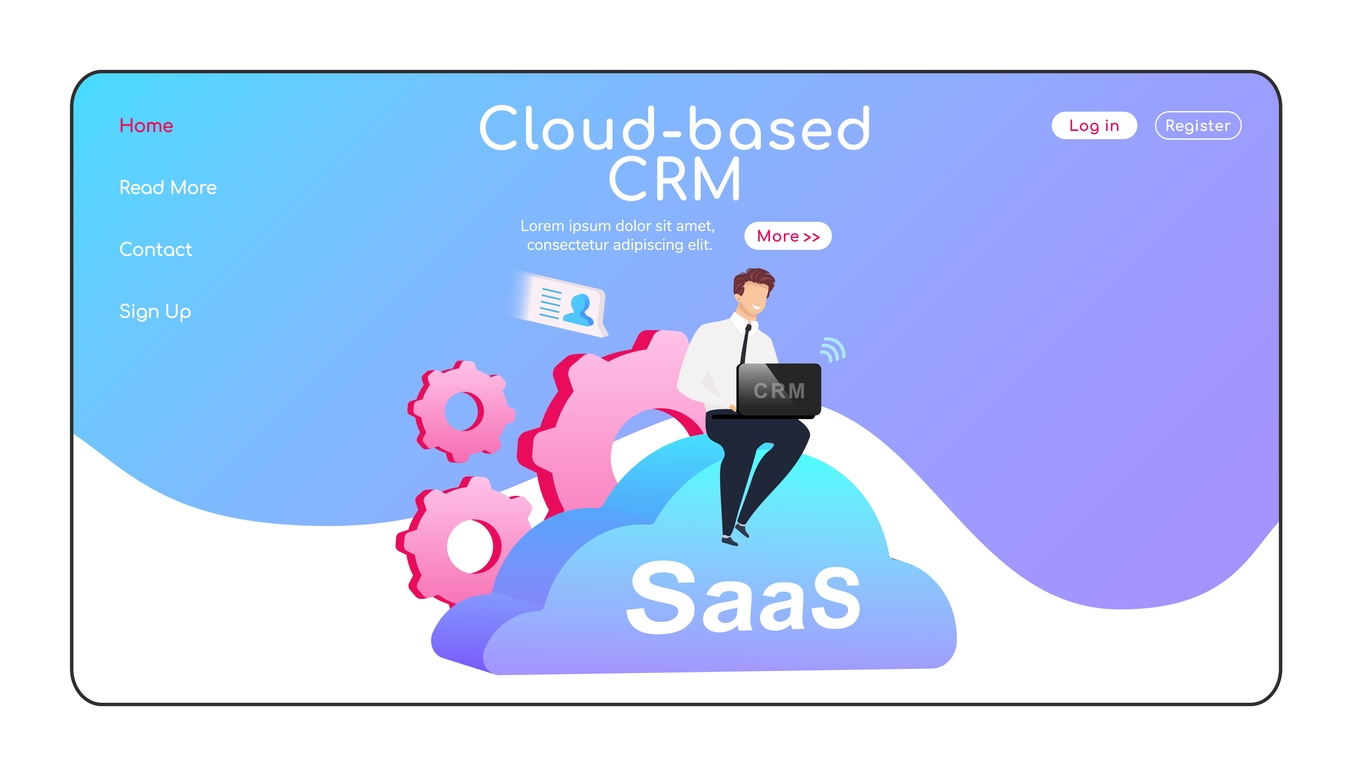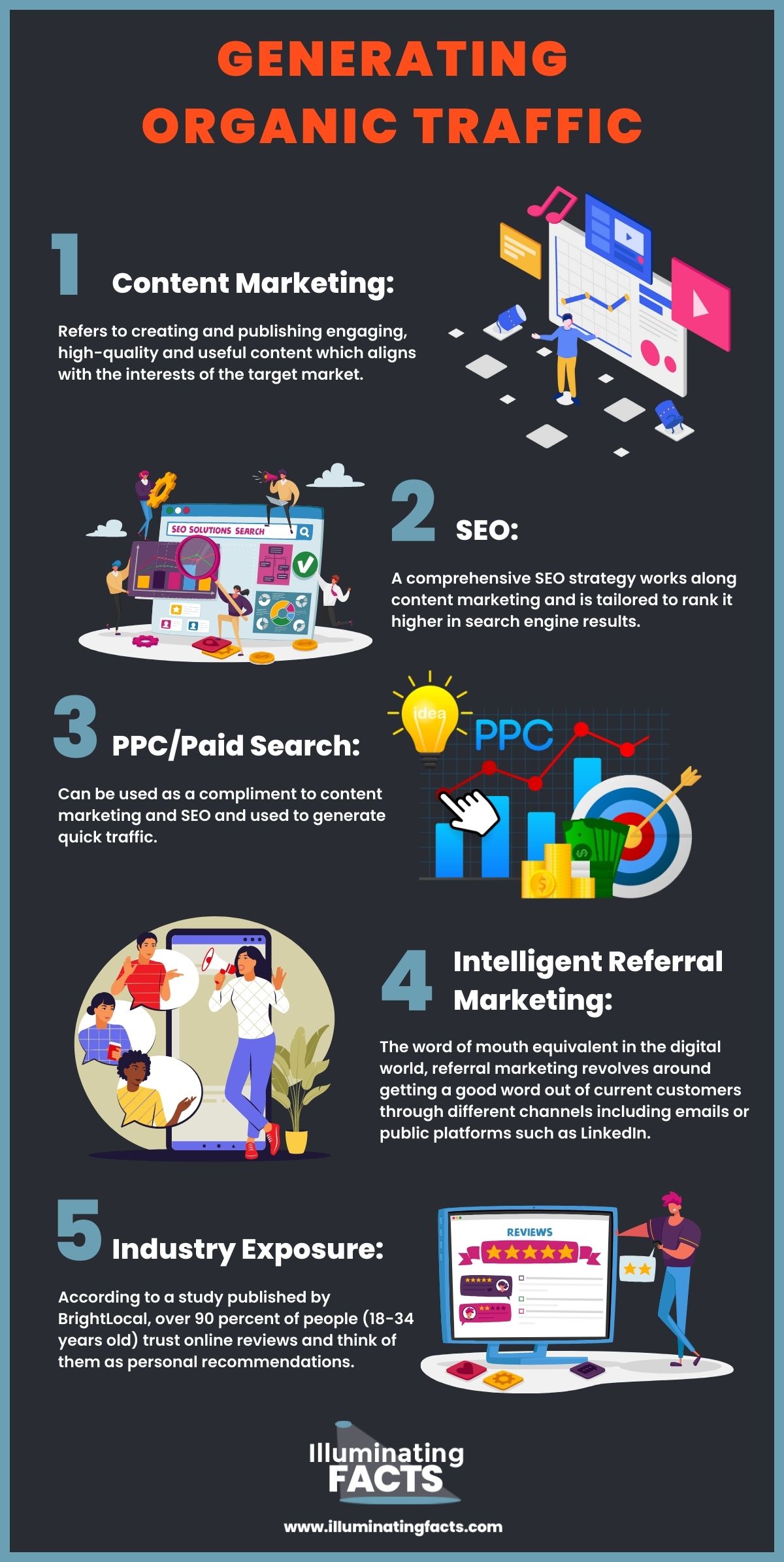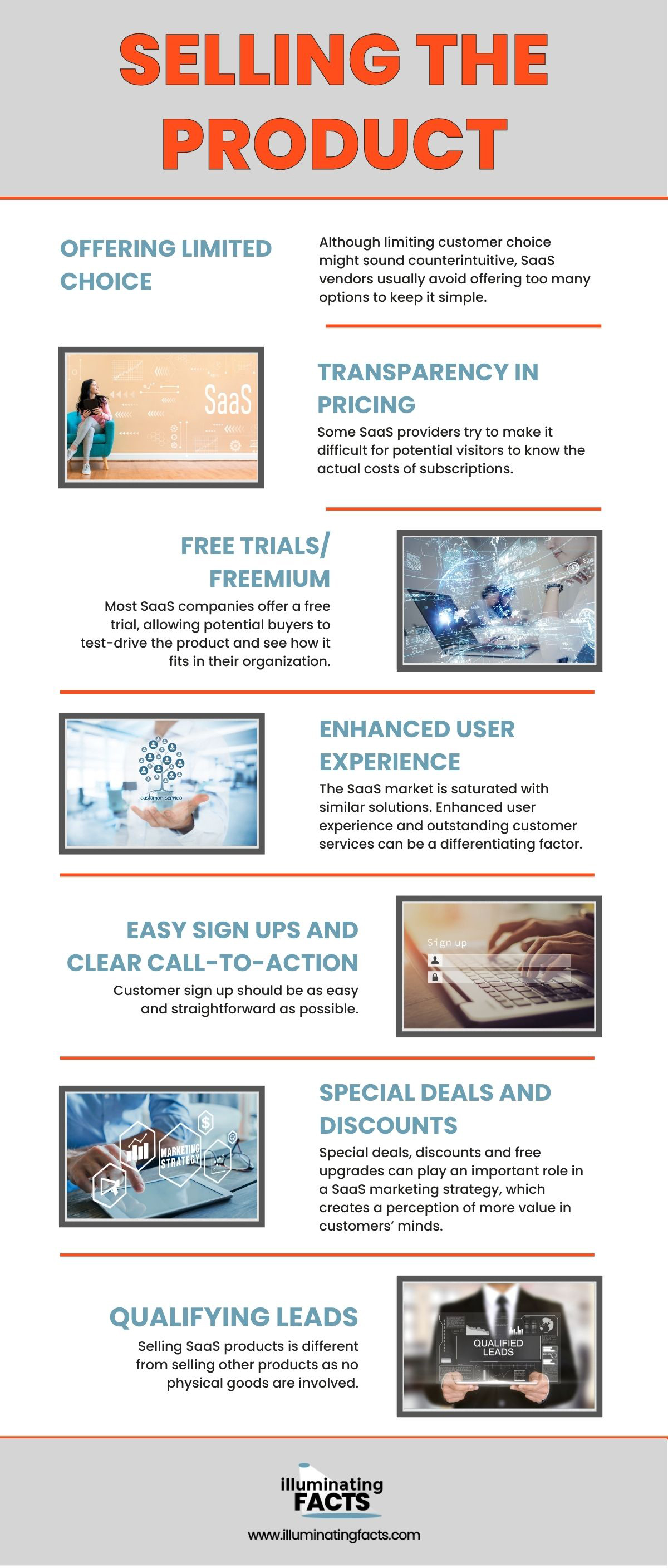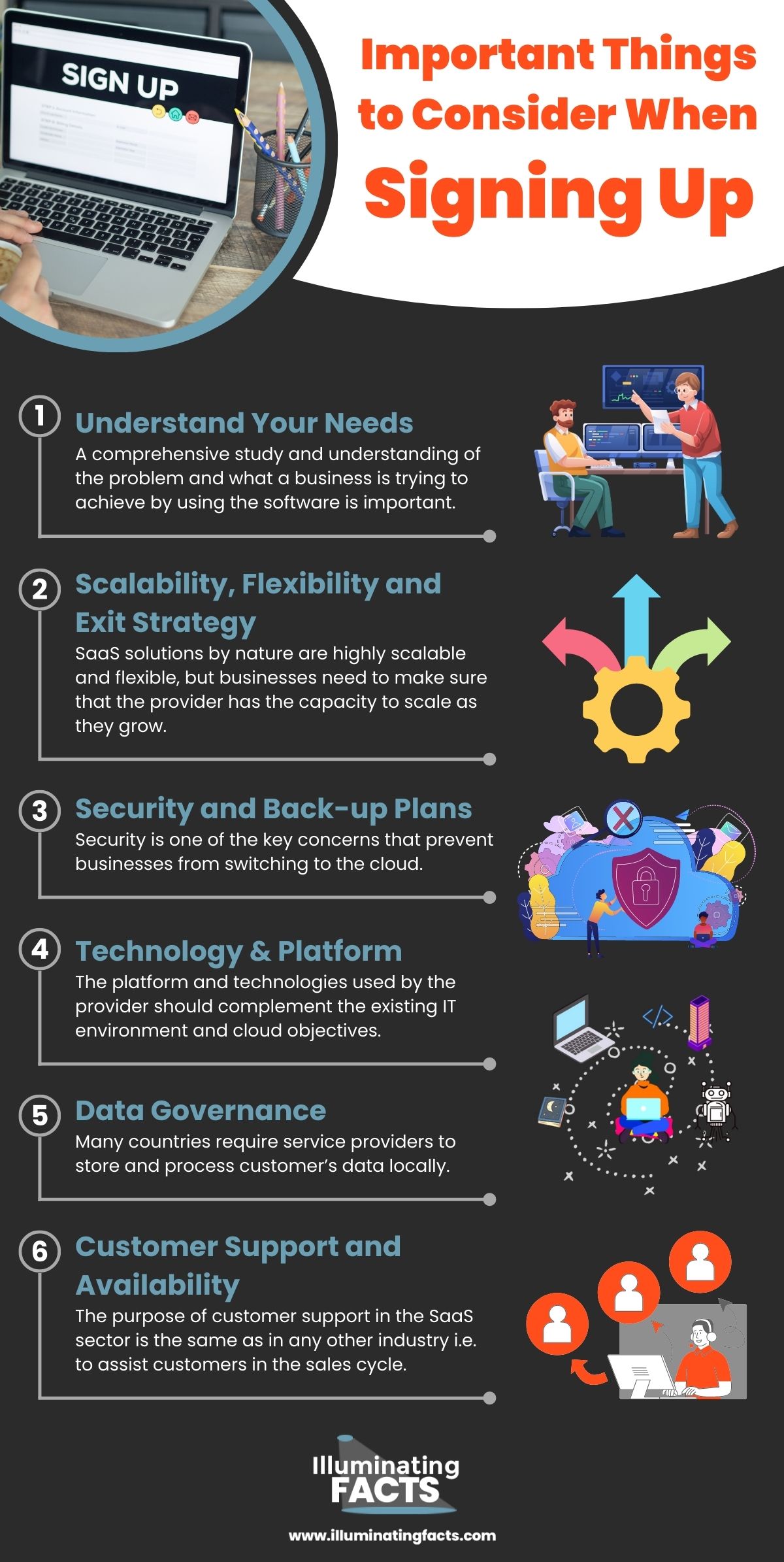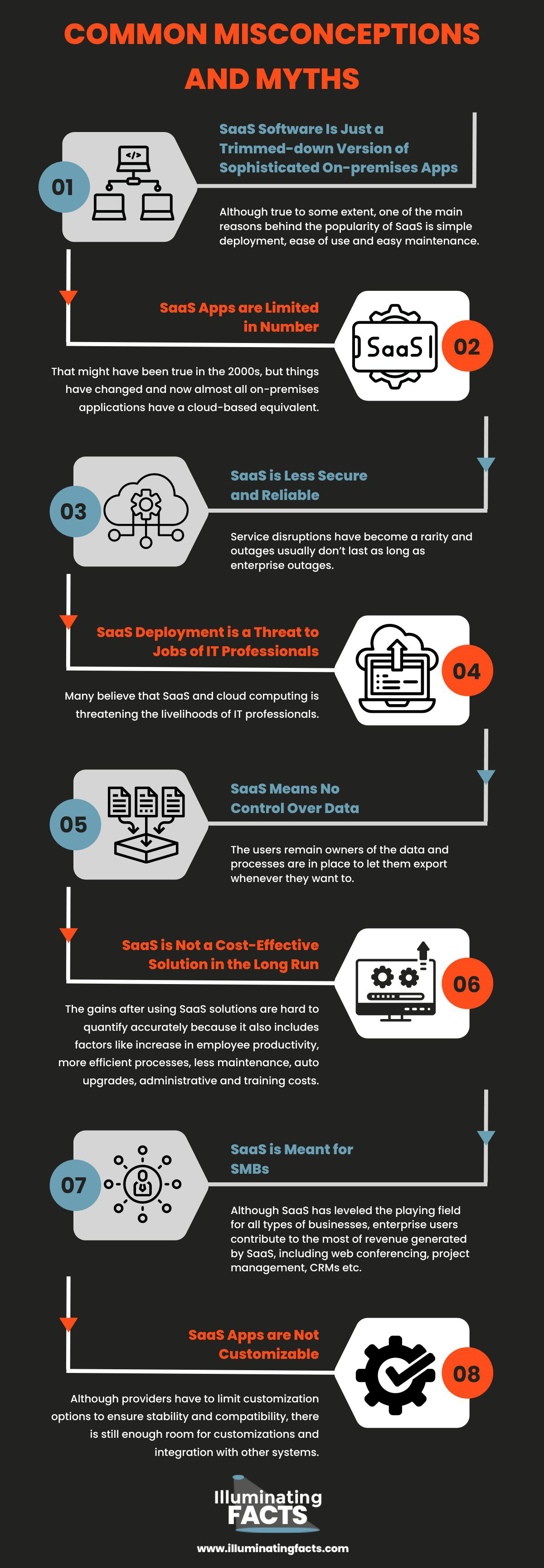Table of Contents
SaaS is fast becoming the go-to option for almost all industries and helps build a reliable digital ecosystem. It empowers both SMBs and enterprises to be more productive and goal-driven. A growing number of businesses and sectors have adopted the technology mainly because of low initial cost and the level of flexibility and scalability it offers, which boosts operational efficiency and brings structure. SaaS is influencing processes and strategies around almost all key businesses areas including:
- Talent management
- Performance tracking
- Customer Services
- Forecasting
- Creating business strategies based on reliable data
- Predicting customer behavior
- Delivering personalized customer experiences
- Marketing and sales
- End-to-end supply chain management
- Demand driven planning
- Accelerating innovation
- Business transformation
- Gaining financial excellence
Marketing SaaS Products
Businesses need a robust marketing strategy that helps them stand out from the crowd. But in absence of a physical product and with plenty of competition, marketing SaaS products is not an easy feat. A typical marketing strategy involves developing a product and marketing it to make a lot of sales. However, with no physical product to show off to potential customers, SaaS companies need to adopt their marketing strategy according to the nature of the industry.
Because of the churn factor (the rate at which active subscribers are canceling their subscription), SaaS marketing strategy needs to be an ongoing process and revolve more around retaining customers. Other industries don’t have much to worry about once they have hooked their customers, but SaaS companies have to maximize their efforts to keep churn rate in check.
Customer/Target Audience
SaaS products can be complex with varying features, so marketers have to think out of the box to make their marketing communication informative, catchy and yet simple. The majority of SaaS customers include B2C and B2B companies. SaaS marketers need to emphasize their efforts on the decision-makers to generate sizable revenue. For example, if a SaaS product is made for managing inventory, marketing efforts need to focus on the head of supply chain managers.
SaaS products usually have longer and multi-stage product cycles and a longer customer journey, which is hard to manage using traditional marketing strategies. The software may be complex and customers may want customized demos to determine how well a solution works with what they are already using, which can vary a lot from one customer to another. Customized demos can help them better gauge the effectiveness of a solution and make an informed decision.
Competition and Pricing
The SaaS market is jam packed with all sorts of products. For example, there exist around 1,300 project management solutions, while there are hundreds of categories each having solutions in hundreds. Pricing is an integral part of a marketing strategy and can give SaaS businesses a competitive edge. Detailed and clear pricing makes it easier for potential customers to make a buying decision and can help increase conversion rate.
SaaS marketing Strategy and Marketing Channels
The main goal of a SaaS marketing strategy is to attract organic traffic and showcase your product effectively. There are many tried and tested marketing tactics used to promote and sell SaaS products, which depend on the stage a company is in. Startups and SaaS companies in their early stages usually focus on establishing credibility, creating brand awareness, confirming the market fit and finding true costs to acquire customers.
Growing and emerging SaaS businesses that have proven their market fit are more focused on channel optimization i.e. expanding rapidly upon channels that are proven, market expansion, minimizing acquisition costs, optimizing on-site experience and brand amplification. A sprinkle of SEO and a pinch of social media strategy might be helpful, but the important thing is to create a clear and robust marketing strategy that takes into account the stage a SaaS company is in and how its products help solve customer’s problems.
Generating Organic Traffic
Getting as much site traffic as possible is the key to the success of a SaaS marketing strategy. Some tried and tested methods to do so include:
Content Marketing:
Refers to creating and publishing engaging, high-quality and useful content which aligns with the interests of the target market. The content is optimized for both keywords and user intent e.g. a user looking for a product should land on a sales page, while a user looking for information should reach the blog post. Rich content should be available according to the sales funnel users are coming in.
SEO:
A comprehensive SEO strategy works along content marketing and is tailored to rank it higher in search engine results. SEO can get pretty complex and includes a variety of different tasks, which might produce different results for different sites.
PPC/Paid Search:
Can be used as a compliment to content marketing and SEO and used to generate quick traffic. Pay-per-click advertising involves setting a marketing budget aside for branded search terms, including the company name. A lot of variations of adverts might be needed before creating the most attractive and engaging adverts in order to improve conversion rate.
Intelligent Referral Marketing:
The word of mouth equivalent in the digital world, referral marketing revolves around getting a good word out of current customers through different channels including emails or public platforms such as LinkedIn. Referral marketing is particularly beneficial for B2B companies and usually involves offering rewards or incentives to get the word out.
Industry Exposure:
According to a study published by BrightLocal[i], over 90 percent of people (18-34 years old) trust online reviews and think of them as personal recommendations. Positive exposure to SaaS review sites can greatly help in generating web traffic, so it is worth trying to get featured on as many review sites as possible.
Selling the Product
Offering Limited Choice
Although limiting customer choice might sound counterintuitive, SaaS vendors usually avoid offering too many options to keep it simple. For example, MailChimp offers a wide range of features and functionality, but only four subscription plans. Fewer plans with clear value propositions work better than too many plans that might confuse the customer and make them look for other options.
Transparency in Pricing
Some SaaS providers try to make it difficult for potential visitors to know the actual costs of subscriptions. They do this in order to hook the visitor before revealing the costs, but this strategy can end up making visitors frustrated and sends a negative message. Potential customers expect transparent pricing and don’t like spending too much time to know the costs. Obfuscating or hiding subscription costs can make visitors suspicious and they might want to look somewhere else.
Free Trials/ Freemium
Most SaaS companies offer a free trial, allowing potential buyers to test-drive the product and see how it fits in their organization. Freemium software on the other hand is an effective way of generating revenue by offering software for free, but selling premium or extra features at an additional cost.
Enhanced User Experience
The SaaS market is saturated with similar solutions. Enhanced user experience and outstanding customer services can be a differentiating factor. The user experience isn’t just about customer’s interaction with the software, but it also includes interaction with a business through different channels, including customer support and social media.
Easy Sign Ups and Clear Call-to-Action
Customer sign up should be as easy and straightforward as possible. A lot of obstacles during the sign-up stage such as asking information not critical for registration might cause visitors to look somewhere else, even if they are convinced of the product’s benefits. Moving around the site should be frictionless and calls to action should be clear by using explicit anchor text and positioned prominently.
Special Deals and Discounts
Special deals, discounts and free upgrades can play an important role in a SaaS marketing strategy, which creates a perception of more value in customers’ minds. Discounts and bundle deals are also useful for cross-selling/upselling. These promotions are supposed to be occasional as customers won’t perceive them as anything special if they are available all the time.
Qualifying Leads
Selling SaaS products is different from selling other products as no physical goods are involved. The seller first has to generate and qualify leads, and pursue them to test-drive its product before asking for a sale. A higher number of leads also means more time spent on them to convert into sales. Contacting all leads is not always the best solution and requires a lot of time and effort. Businesses need a strategy to spend time only on important leads by measuring lead quality e.g. lead scoring models enable them to pick the right leads.
Important Things to Consider When Signing Up
SaaS has leveled the playing field for businesses of all sizes, but there are still quite a few companies that don’t fully understand how it can help them stay competitive. In addition to understanding the benefits, drawbacks and challenges to implementing SaaS, businesses should also consider the following important factors when choosing a SaaS solution.
Understand Your Needs
Signing up for a SaaS subscription is pretty simple and straightforward. Although a lot cheaper than traditional software in the beginning, SaaS software might not be the best financial option in the long run for all businesses. The process of buying a SaaS solution starts with identifying pain points. Do you want to switch to the cloud just to minimize upfront and maintenance costs or because you want to make collaboration easier for teams spread across different regions?
A comprehensive study and understanding of the problem and what a business is trying to achieve by using the software is important. A well-defined problem is easier to deal with and makes it easier for businesses to find the right solution that meets their operational, compliance and security needs. Understanding specific business needs include technical, data, service, compliance, security and service management requirements. Business requirements can vary from one business to another, so clear understanding of these makes it simpler to evaluate different vendors.
Most SaaS solutions have different feature sets and pricing tiers, while some also allow you to only pick the features you need. Determining the must-haves enable businesses to avoid overpaying for features or seats they won’t actually use, especially when they are already using solutions that cover some of those features. All stakeholders have to be taken on board during the process, so they can also have their say in the final decision.
Scalability, Flexibility and Exit Strategy
SaaS solutions by nature are highly scalable and flexible, but businesses need to make sure that the provider has the capacity to scale as they grow. A solution should be flexible enough to evolve with business processes, workflows and market dynamics. An exit strategy enables businesses to swiftly switch to another provider without any hassle. Businesses need to document and understand important things including minimum notice period, discontinuity points, data ownership and data migration. These should be part of the SLA (Service Level Agreement) to make sure customer rights are clearly defined.
Security and Back-up Plans
Security is one of the key concerns that prevent businesses from switching to the cloud. In an age of strict compliance requirements, data breaches and cybercrime, security has become the top priority of businesses. Running your own or a third-party security audit enables you to have a good idea of a vendor’s security infrastructure, while security certifications like SOC 2 can also be good indicators.
Technology & Platform
The platform and technologies used by the provider should complement the existing IT environment and cloud objectives. A lot of time and effort is required if the customer has to do too much customizations just to align their existing infrastructure with a SaaS solution. It’s easier to work with a provider that also offers migration services, which include technical assistance and assessment and planning.
Data Governance
Many countries require service providers to store and process customer’s data locally. Does the provider offer control over jurisdiction, management and processing of data and is it transparent about where the data is stored and processed? Does it offer protection of in-transit data through encryption? These are the kind of questions that should be clearly defined in the SLA as well as compliance and risk management obligations.
Customer Support and Availability
The purpose of customer support in the SaaS sector is the same as in any other industry i.e. to assist customers in the sales cycle. A superior product also needs great customer support to succeed, but in many cases, CS is the sore point of SaaS. Vendors that have clearly laid out important information save users from having to hunt answers. CS availability is another factor to consider because a vendor located in a different region might be working on a different schedule, which can cause delays in resolving complaints.
SaaS Pricing Models
Pricing models allow SaaS companies to balance value and revenue and achieve their growth goals. However, the number of different models can make it difficult for customers to pick the right pricing model. Just like a vendor is trying to strike a balance between value and revenue, the customer also deserves to get the best value for their money. Pricing a service is a lot more difficult than pricing a physical product as no physical goods are involved.
Having at least a basic understanding of SaaS pricing models can help businesses, especially SMBs to optimize IT spending. SaaS subscriptions are more than rigid monthly or quarterly payments. Flexible subscriptions make more sense for growing businesses that want flexibility and a high level of scalability.
In the SaaS industry, there is no such thing as a one-size-fits-all pricing model, so businesses have to choose one based on their own requirements, budget and growth forecasts. Although the following pricing models are distinguishable from each other, in the real world almost all models are a hybrid of different options.
Per-User Pricing
- Subscription costs are based on the number of users
- The subscription usually includes all features
- Businesses only have to determine the total number of users
- Makes forecasting and budgeting easier
- A good option for SMBs, allowing them to cut costs by only paying for a limited number of users
- Might not be the best option for big businesses having large teams
Per-active User Pricing
- A subset of per-user pricing, normally preferred by large organizations
- Businesses can sign up for a large number of users and only pay for active users
- Helps avoid wasting money on unused seats
- Makes company-wide software rollout easier
- Not the best option for small teams and SMBs with limited seats
- Works well for businesses in high turnover industries where new employees are regularly hired
Usage-based Pricing
- Also known as pay-as-you-go pricing
- A good option if usage patterns are predictable
- Usually used for IaaS products such as Amazon Web Services
- Usage can be in the number of transactions processed, Gigabytes, API requests etc.
- Minimizes barriers to entry
- Predicting future costs is difficult, especially if usage patterns are unpredictable
- Highly scalable
Tiered Pricing
- A hybrid model that offers flexible subscription fees and software packages
- Each tier is designed around a certain feature set and budget e.g. a different package for beginners and professionals who have different needs
- Subscriptions are tailored keeping in mind specific needs of different segments
- Allows businesses to choose a package the offers the specific features they need
- Users pay for the features they really need instead of paying extra for unused features
- Tiered pricing model can be confusing and small teams might have a hard time determining which package to choose
Functionality-based Pricing
- Has many similarities with tiered pricing
- Businesses can choose the specific features and integration options they need
- Beneficial for businesses that are crystal clear about their requirements
- It’s hard to accurately predict which features you’ll need in the future
- A subscription within budget might not contain all the functionalities
Customizable Pricing
- Allows users to make their own pricing model and handpick features
- Packages can be customized according to business requirements
- A good option for businesses that have well-defined requirements
- Highly flexible
- Can be more expensive than other pricing options
- Adding more features/functionality costs more, so forecasting is not so simple
Flat-rate Pricing
- Certain features or software package at a flat price, usually on a monthly, quarterly or annual basis
- Clearly defined products, easy to understand
- Less common method
- Gives full access to the software at a fixed price. No need to pay extra for additional features
- Makes planning, budgeting and financial forecasting simple
- Can be less cost effective if only a few features are used
- Limited scalability and flexibility
- Not such a good option for growing businesses
Freemium
- A great option for startups and individuals that just need the basic functionality
- Usually comes with ads, limited functionality or specific features that are unlocked after a paid subscription
- Usually used as part of tiered pricing
- Easy to get started, only pay for advanced features
- Eliminates barriers to entry
Common Misconceptions and Myths
SaaS Software Is Just a Trimmed-down Version of Sophisticated On-premises Apps
Although true to some extent, one of the main reasons behind the popularity of SaaS is simple deployment, ease of use and easy maintenance. Many providers offer a ‘simpler’ online version of their apps, but for the most part there is no shortage of fully-featured enterprise-grade SaaS applications in almost all categories.
SaaS Apps are Limited in Number
That might have been true in the 2000s, but things have changed and now almost all on-premises applications have a cloud-based equivalent. Moreover, a variety of pricing options are available for SaaS apps, allowing users to choose features without having to pay for a full package. SaaS is no longer a peripheral trend and is already a mainstream movement.
SaaS is Less Secure and Reliable
Service disruptions have become a rarity and outages usually don’t last as long as enterprise outages. Security breaches still happen in conventional IT environments and dealing with them on a self-service basis is a big hassle. SaaS security has significantly improved over time and some believe that it has become even better than on-premise solutions. SaaS apps are usually more reliable than traditional software as they can be accessed from anywhere, using almost any device with a 99.9x percent uptime guarantee. The probability of an on-premise software crashing is greater than experiencing SaaS app downtime.
SaaS Deployment is a Threat to Jobs of IT Professionals
Many believe that SaaS and cloud computing is threatening the livelihoods of IT professionals. However, SaaS actually rescues them from mundane daily tasks and hassles related to managing traditional software and underlying infrastructure. Modern SaaS IT management solutions are helping them manage their IT operations more effectively, allowing them to focus more on IT tasks that really matter.
SaaS Means No Control Over Data
The users remain owners of the data and processes are in place to let them export whenever they want to. However, data migration and interoperability should be explicitly stated in the SLA to avoid issues when terminating an agreement.
SaaS is Not a Cost-Effective Solution in the Long Run
The gains after using SaaS solutions are hard to quantify accurately because it also includes factors like increase in employee productivity, more efficient processes, less maintenance, auto upgrades, administrative and training costs.
SaaS is Meant for SMBs
Although SaaS has leveled the playing field for all types of businesses, enterprise users contribute to the most of revenue generated by SaaS, including web conferencing, project management, CRMs etc. SaaS is not meant for a certain category of business users and enterprise adoption has been growing at a steady pace.
SaaS Apps are Not Customizable
Although providers have to limit customization options to ensure stability and compatibility, there is still enough room for customizations and integration with other systems. The level of customization varies from one provider to another. Some allow making deep customizations without even having to modify the source code, while some prioritize consistency and stability over customizability.
Conclusion and Future Prospects
Advancements in the field of IT, reliable internet and lower barriers to entry have paved the way for SaaS. SaaS companies are eager to find new solutions, but variety and options can also lead to SaaS chaos and decision paralysis. With hundreds of offerings in the CRM market alone and each provider claiming to solve specific business problems, users can become confused and frustrated. SaaS apps and tools are expected to grow in the coming years with dozens if not hundreds of tools available for every function.
Automation through AI and machine learning is already generating waves and key SaaS players are banking on pairing AI technologies with SaaS to boost its core characteristics. From implementing NLP in customer services to automatic identification of threats and troubleshooting issues using machine learning, a new era of SaaS has started to emerge and is expected to lead the charge.
Customers seek plug-and-play apps whenever possible. The future of the industry are platforms that require minimal setup time and help businesses control their cloud solutions in one place. Low barriers to entry and high demand indicates no slowing down of SaaS tools, but bringing more simplicity to platforms can help save businesses from decision paralysis. SaaS is considered to be the future of software, and the future is already here.
[i] “Local Consumer Review Survey 2022”. Retrieved from https://www.brightlocal.com/research/local-consumer-review-survey/

